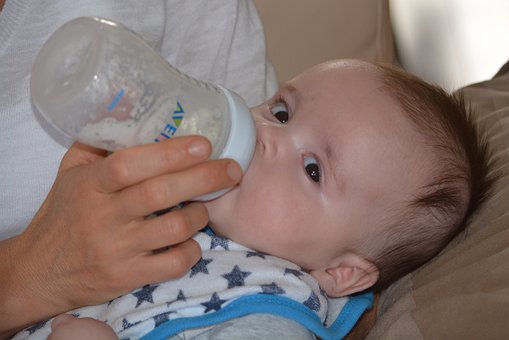Summary: A new study reveals that atypical metabolite levels at birth are associated with a significantly higher risk of sudden infant death syndrome (SIDS), potentially offering a way to identify at-risk infants early.
Estimated reading time: 5 minutes
A groundbreaking study has uncovered a potential method for identifying infants at higher risk of sudden infant death syndrome (SIDS) soon after birth. The research, published in JAMA Pediatrics, found that newborns with certain atypical metabolic patterns were over 14 times more likely to die from SIDS compared to those with more typical patterns.
SIDS remains a leading cause of infant mortality in developed countries, despite decades of research and public health campaigns. This new study, led by Scott Oltman of the University of California San Francisco School of Medicine, offers hope for better understanding and potentially preventing this tragic condition.
Metabolites: The Body’s Chemical Fingerprints
The study focused on metabolites, which are molecules produced by various chemical reactions in the body. These substances can provide valuable insights into an individual’s health and metabolic processes. By analyzing the metabolic profiles of newborns, the researchers sought to identify patterns that might be associated with an increased risk of SIDS.
Using data from more than 2 million infants born in California between 2005 and 2011, the team compared newborn screening test results of 354 SIDS cases to those of 1,416 infants who survived to at least one year old. The state’s comprehensive newborn screening program, which checks for various serious disorders, provided a wealth of data on metabolite levels for each infant.
A Striking Pattern Emerges
After analyzing the data, the researchers identified a specific pattern involving eight metabolites that was strongly associated with SIDS risk. Infants with the highest-risk metabolic profile were 14.4 times more likely to die from SIDS compared to those with the lowest-risk profile.
Dr. Marion Koso Thomas of the NIH’s Eunice Kennedy Shriver National Institute of Child Health and Human Development, who was not involved in the study, commented on its significance: “This research provides a potential new avenue for identifying infants at increased risk for SIDS soon after birth, which could inform efforts to reduce SIDS risk.”
Implications for SIDS Prevention and Research
The findings of this study have several important implications:
- Early risk identification: The ability to identify high-risk infants shortly after birth could allow for more targeted monitoring and interventions.
- Improved understanding of SIDS mechanisms: Studying the biochemical pathways that produce the metabolites linked to SIDS may provide new insights into the underlying causes of the condition.
- Development of new preventive strategies: With a better understanding of the metabolic factors involved in SIDS, researchers may be able to develop more effective prevention methods.
- Potential for personalized care: Identifying at-risk infants could lead to more tailored advice and support for parents and caregivers.
Limitations and Future Research
While these results are promising, it’s important to note that this was a case-control study, which can show associations but not prove causation. Additionally, the study was limited to infants born in California, and further research will be needed to confirm these findings in other populations.
Future studies will likely focus on:
- Validating these results in larger, more diverse populations
- Investigating the specific biochemical pathways involved in producing the identified metabolic patterns
- Developing and testing interventions based on this new understanding of SIDS risk factors
Why It Matters
SIDS is a devastating condition that affects thousands of families each year. In the United States alone, about 3,400 infants die suddenly and unexpectedly each year, with a significant portion of these deaths attributed to SIDS. This research offers a potential breakthrough in our ability to identify at-risk infants and potentially prevent SIDS deaths.
For parents and healthcare providers, this study provides hope that we may soon have better tools to protect vulnerable infants. However, it’s crucial to remember that existing SIDS prevention guidelines, such as placing infants on their backs to sleep and avoiding soft bedding, remain vitally important.
As research in this area continues, we may be moving closer to a future where SIDS becomes a preventable tragedy rather than an unpredictable one.
Quiz:
- How much more likely were infants with the highest-risk metabolic profile to die from SIDS compared to those with the lowest-risk profile?
- How many SIDS cases were included in the study?
- What type of molecules did the study focus on to identify SIDS risk?
Answer Key:
- Infants with the highest-risk metabolic profile were 14.4 times more likely to die from SIDS.
- The study included 354 SIDS cases.
- The study focused on metabolites, which are molecules produced by various chemical reactions in the body.
If our reporting has informed or inspired you, please consider making a donation. Every contribution, no matter the size, empowers us to continue delivering accurate, engaging, and trustworthy science and medical news. Independent journalism requires time, effort, and resources—your support ensures we can keep uncovering the stories that matter most to you.
Join us in making knowledge accessible and impactful. Thank you for standing with us!

